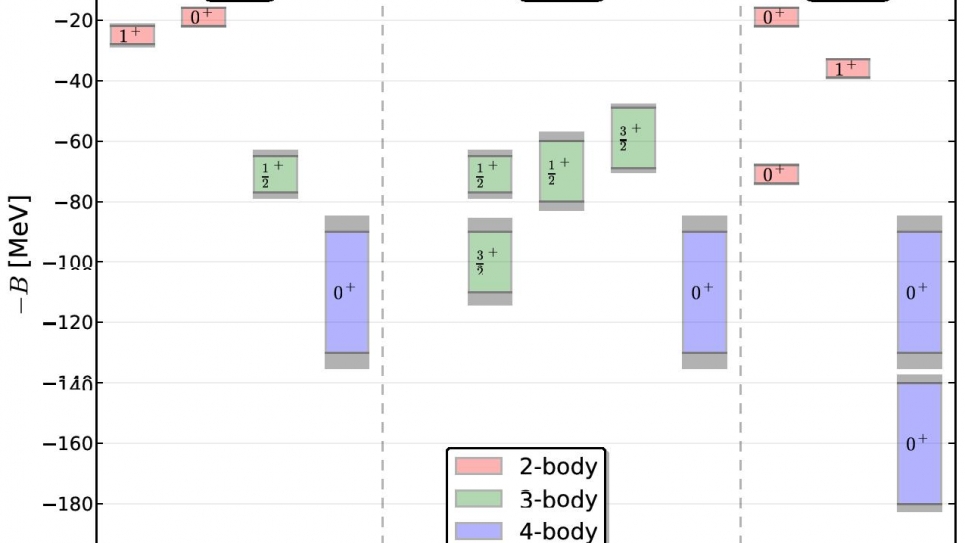
Ab Initio Hyper-Nuclear Physics
Kostas Orginos, College of William and Mary and Thomas Jefferson National Accelerator Facility (Jefferson Lab), was awarded 20 million hours to study the spectrum of light nuclei and hypernuclei directly from the underlying quantum field theory of the strong interactions, a central goal of nuclear physics research, where findings will impact the worldwide hypernuclear experimental program and the realm of nuclear astrophysics by refining our understanding of the lifecycle of stars.
This project aims to study the spectrum of light nuclei and hypernuclei (nuclei that contain strange quarks, in addition to up and down quarks) directly from the underlying theory of the strong interactions, quantum chromodynamics (QCD). This is a central goal of nuclear physics research, impacting the worldwide hypernuclear experimental program, as well as nuclear astrophysics, where it will refine the community’s understanding of stellar evolution and core collapse.
Coordinated efforts by the nuclear physics community during the last several years to develop the computational technology to perform convergent nuclear structure calculations show that three-nucleon forces are required to determine the structure of light nuclei. Given the size of the three-nucleon and higher-body interactions, there is considerable uncertainty in their form, and hence in the predictions for systems for which there is little or no experimental guidance, such as those in extreme nuclear environments, for instance, in the interior of core-collapse supernovae. Further, one of the motivations for building the Facility for Rare Isotope Beams is to better constrain the multi-neutron interactions from very neutron-rich nuclei. Currently, confirmation and exploitation of the unified description of low-energy nuclear physics that the Standard Model provides is absent because of the complexity of the vacuum. The resulting lack of calculability is evident in the present inability to make precision predictions with quantifiable uncertainties for nuclear processes that cannot be accessed experimentally or through the study and observation of stellar environments.
The three goals of this project are to A) obtain the spectrum of light nuclei and hypernuclei directly from QCD at unphysically large quark masses, B) provide the first physical predictions of this spectrum, and, finally, C) calculate this spectrum with dynamical up, down and strange quarks with their physical masses. Successful completion of this plan will firmly establish the foundational basis of nuclear physics in the Standard Model, and provide an exploration of a new frontier in nuclear science.